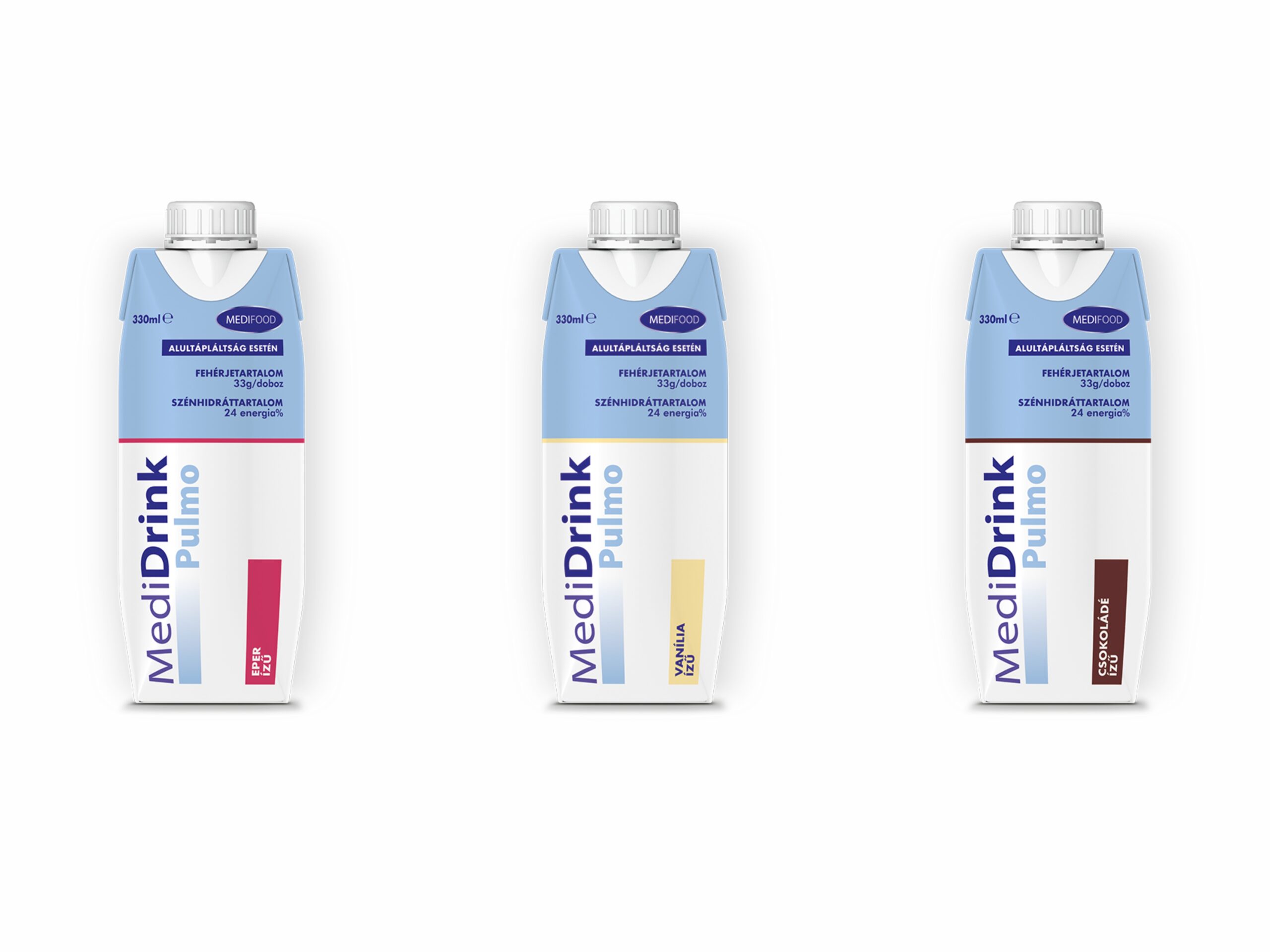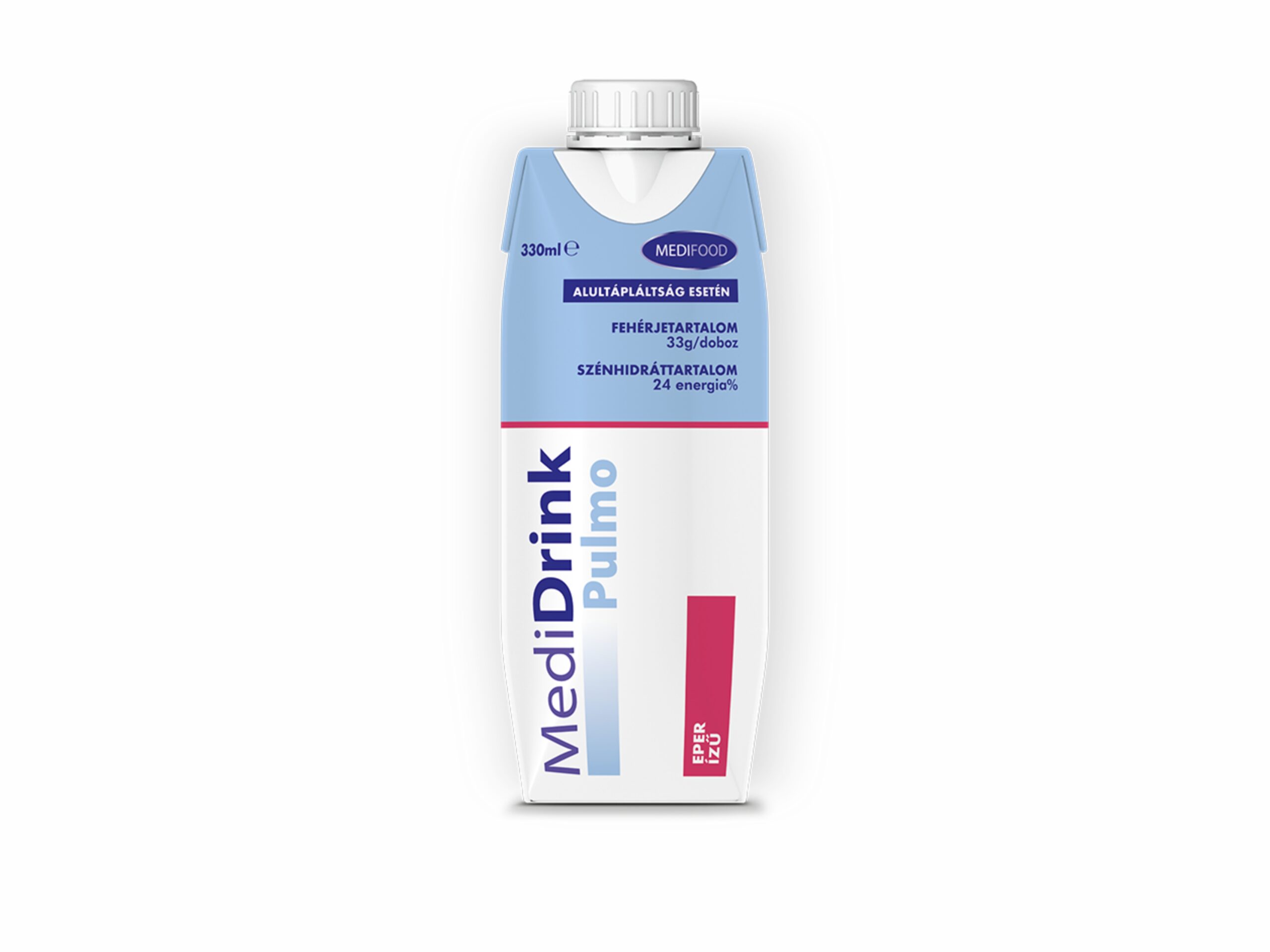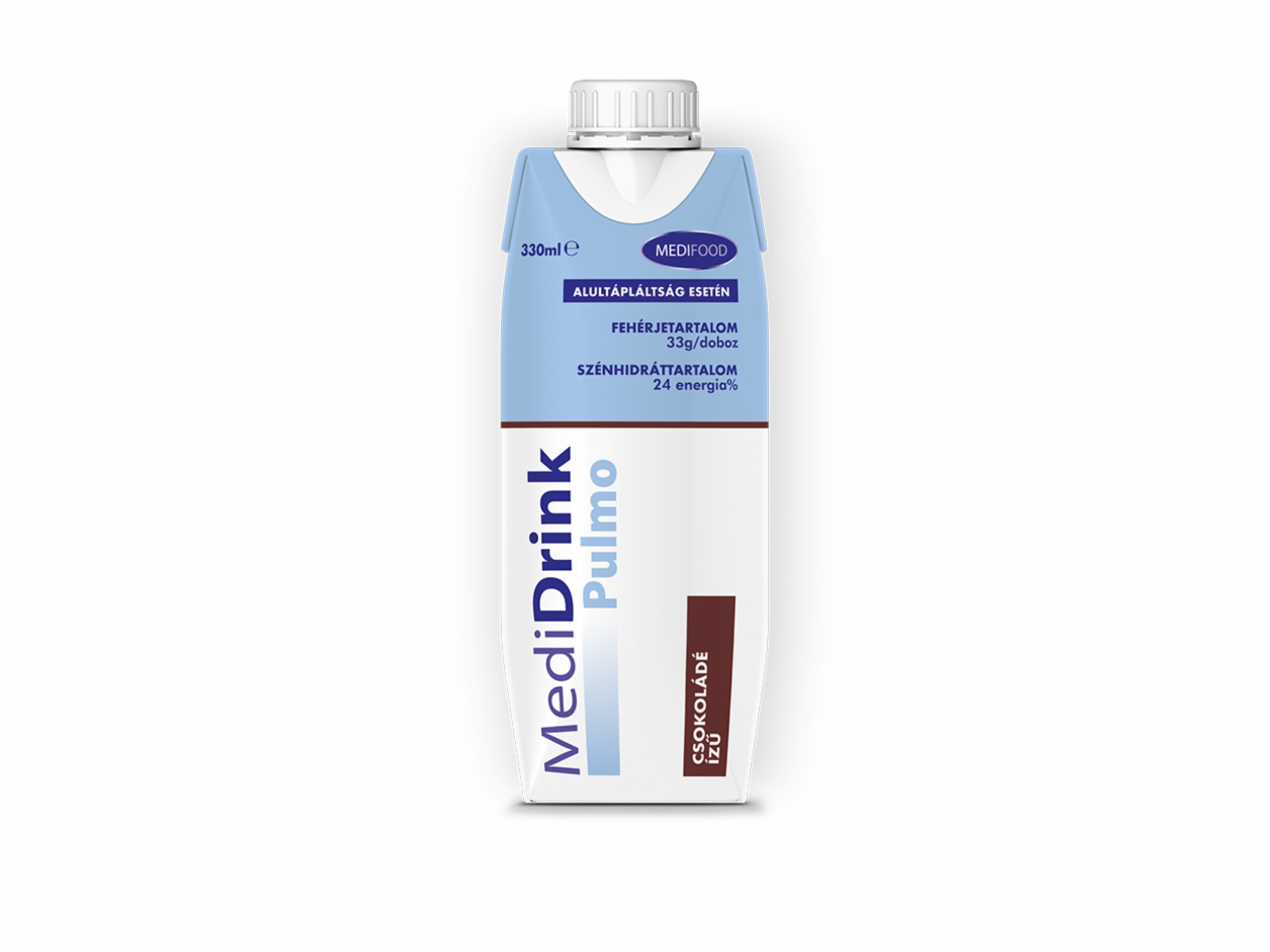MediDrink Pulmo
- Kezdőlap
- >
- Egészségügyi Szakemberek részére
- >
- MediDrink Pulmo
Betegséghez kapcsolódó alultápláltság
A betegséghez kapcsolódó alultápláltság évek óta jelentős, de aluldimenzionált probléma, amely mintegy 20 millió beteget érint az Európai Unióban, és 33 millió beteget Európa valamennyi országában (Ljungqvist et al. 2009, Ljungqvist et al. 2010). A betegséghez kapcsolódó alultápláltság a betegség és a szükségleteknek nem megfelelő táplálék-bevitel együttes következményeként alakul ki (Naber et al. 1997). Következésképp, a kezelésnek nem csak magát a betegséget, hanem a klinikai táplálást is magában kell foglalnia.
Betegséghez kapcsolódó alultápláltság krónikus obstruktív tüdőbetegségben (COPD)
Számos COPD-ben szenvedő beteg a jelentős alultápláltsággal járó pulmonális cachexia állapotában van (Itoh et al. 2013). A COPD betegek mintegy 25-40%-ában látható testsúlyvesztés, 35%-ukban pedig csökkent a zsírmentes testtömeg index (Itoh et al. 2013). Az alultáplált COPD betegeknél szignifikánsan magasabb az 1 éven belüli halálozás, és szignifikánsan gyakrabban igényelnek kórházi ellátást (Hoong et al. 2017).
Klinikai táplálás COPD-ben
A testtömeg-növekedés (>2 kg/8 hét) COPD-ben szenvedőknél a túlélés szignifikáns prediktora (Schols et al. 1998). COPD-s betegeknél a kazein alapú táplálás az alacsonyabb teljes test fehérjebontás következtében magasabb nettó protein szintézist indukál (Engelen et al. 2012).
A főként szénhidrát formájában történő energia-bevitel fokozza a szén-dioxid (CO2) termelést, és így súlyos állapotú tüdőbetegeknél akut légzési elégtelenség kialakulásához vezethet. A zsírból származó energia-termelés során kevesebb CO2 képződik, amely bármely artériás CO2 nyomás mellett alacsonyabb szintű alveoláris ventillációt enged meg (Efthimiou et al. 1992). COPD betegek számára az alacsony szénhidrát- és magas zsírtartalmú étrend előnyösebb (Kuo et al. 1993, Frankofort et al. 1991, Cai et al. 2003, Angelillo et al. 1985). Az alacsony szénhidrát- és magas zsírtartalmú étrend biztonságos (Ruth et al. 2013, Dehghan et al. 2017, Niswender et al. 2018).
Omega-3 zsírsav-szupplementáció csökkenti a gyulladást COPD betegekben (Fulton et al. 2013). Az omega-3 zsírsavak csökkentik az exacerbációk számát és a gyógyszerfogyasztást, növelik a 6 perces járástávolságot, javítják a fizikai aktivitás okozta kifáradást, a terhelési időt és a nehézlégzést COPD betegeknél (Fekete et al. 2021, van de Bool et al. 2017, Calder et al. 2018).
Magas dózisú D-vitamin pótlás a rehabilitáció alatt jelentősen növeli a belégző izmok erejét és a maximális oxigén felvételt COPD betegeknél (Hornikx et al. 2012). Magasabb C-vitamin és/vagy E-vitamin bevitel mellett pedig jól megtartott a FEV1 ezeknél a betegeknél (Itoh et al. 2013).
L-karnitin szupplementáció belégző izom tréning mellett javítja a fizikai teljesítő-képességet és a belégző izmok erejét COPD-ben (Borghi-Silva A. et al. 2006).
MediDrink Pulmo
A MediDrink Pulmo 2,0 kcal/ml energiatartalmú, teljes értékű, laktóz- és gluténmentes, fogyasztásra kész speciális gyógyászati célra szánt élelmiszer (a 128/2016 EU rendeletnek megfelelően) csökkent légzésfunkcióval járó tüdőbetegségek kapcsán kialakult alultápláltság diétás ellátására. A MediDrink Pulmo kizárólagos enterális táplálásra és kiegészítő táplálásra is alkalmas.
A MediDrink Pulmo 3 év alatti gyermekeknek, valamint galaktozémiában és örökletes fruktóz intoleranciában (fruktozémiában) szenvedő betegeknek nem adható.
A MediDrink Pulmo napi adagját a kezelőorvosnak kell meghatároznia.
A MediDrink Pulmo jelenleg 3 ízben (csokoládé, eper, vanília) van forgalomban.
Compliance, biztonságosság, tolerabilitás
A compliance szignifikánsan magasabb ≥2 kcal/ml energia-tartalmú iható tápszerek esetén a standard 1,5 kcal/ml energia-tartalmú iható tápszerekhez képest (Hubbard et al. 2012). Az iható tápszerek ízletessége a betegek számára szignifikánsan magasabb tejfehérje-alapú tápszerek esetén (Darmon et al. 2008).
Irodalom
[Complete therapy with clinical nutrition] – Nutricia, 15th June 2016
Eckhardt CL. Micronutrient malnutrition, obesity, and chronic disease in countries undergoing the nutrition transition: potential links and program/policy implications. 2006. International Food Policy Research Institute FCND Discussion Paper 213. (accessed on 12th November 2018)
Elia M. et al. To screen or not to screen for adult malnutrition? Clin Nutr 2005;24:867-84.
Fajcsák Zs. & Lelovics Zs. [Glycemic index and glycemic load]. Új Diéta 2006;4:28-9.
Freijer K. et al. The economic costs of disease related malnutrition. Clin Nutr 2013;32:136-41.
Hite AH. et al. Low-carbohydrate diet review: shifting the paradigm. Nutr Clin Pract 2011;26:300-8.
https://www.abbottnutrition.ie/downloads/4.-Pulmocare-datasheet-Ireland-version-4-October-2019.pdf (accessed on 15th November 2023)
https://www.direct.nutricia.it/prodotto/fortimel-compact-vaniglia-4x-confezione-125-ml (accessed on 15th November 2023)
https://www.fresubin.be/fr-be/produits/fresubin-db-drink/ accessed on 7th November 2023
https://www.fresenius-kabi.com/nl/documents/Calshake®.pdf (accessed on 15th November 2018)
https://www.fresenius-kabi.com/ie/documents/Calshake_Powder-d3ia8wRjwkkU7JuYJ7Ynfi1md03-BOSvSIqunUXr8x0.pdf (accessed on 15th November 2018)
https://www.fresenius-kabi.com/nl/producten/calshake (accessed on 15th November 2018)
http://www.fresenius-kabi.co.uk/ (accessed on 15th November 2018)
https://www.nestlehealthscience.us/brands/nutren/nutren-pulmonary-hcp (accessed on 15th November 2018)
https://www.nutricia.be/fr_be/produits/respifor.html#tabs-83e0f52aea-item-8691bfc754-tab (accessed on 15th November 2023)
https://www.nutricia.nl/content/dam/sn/local/bnl/sn-hcp/website-assets/voedingstabellen/nl/sip-feed/Voedingstabel_Scandishake_Mix_032021.pdf (accessed on 9th November 2023)
https://www.who.int/features/qa/malnutrition/en/ accessed on 23rd March 2020
Itoh M. et al. Undernutrition in patients with COPD and its treatment. Nutrients 2013;5:1316-35.
Ljungqvist O. et al. The European fight against malnutrition. Clin Nutr 2010;29:149-50.
Ljungqvist O. Man FD. Under nutrition: a major health problem in Europe. Nutr Hosp 2009;24:369-70.
Medifood data on file 2018
Stratton RJ. et al. Disease-related Malnutrition: An Evidence-based Approach to Treatment. CABI Publishing, 2003.
Tisdale MJ et al. Cancer cachexia. Langenbecks Arch Surg 2004;389:299-305.
www.fresenius-kabi.ie accessed on accessed on 15th November 2018










